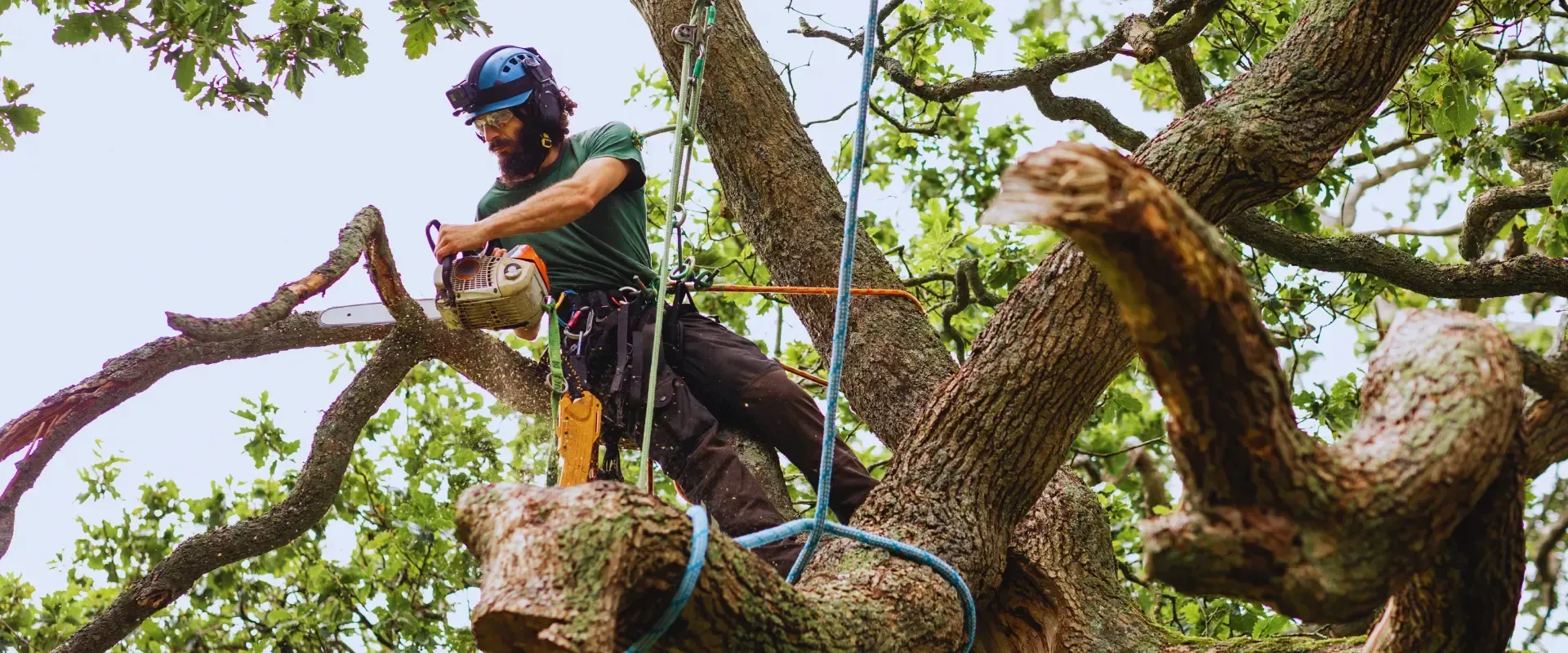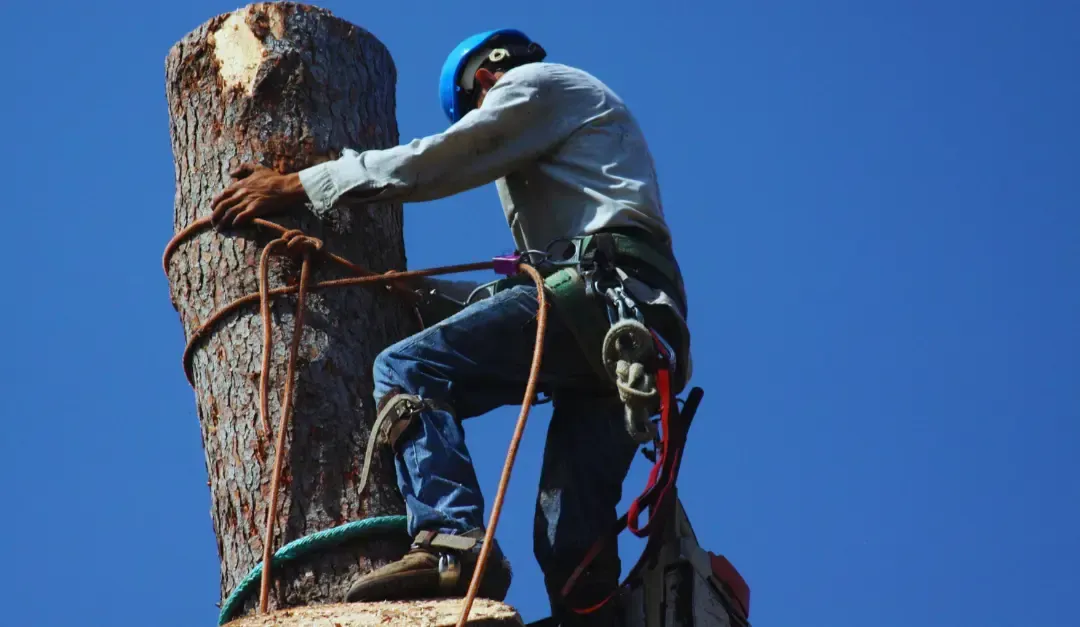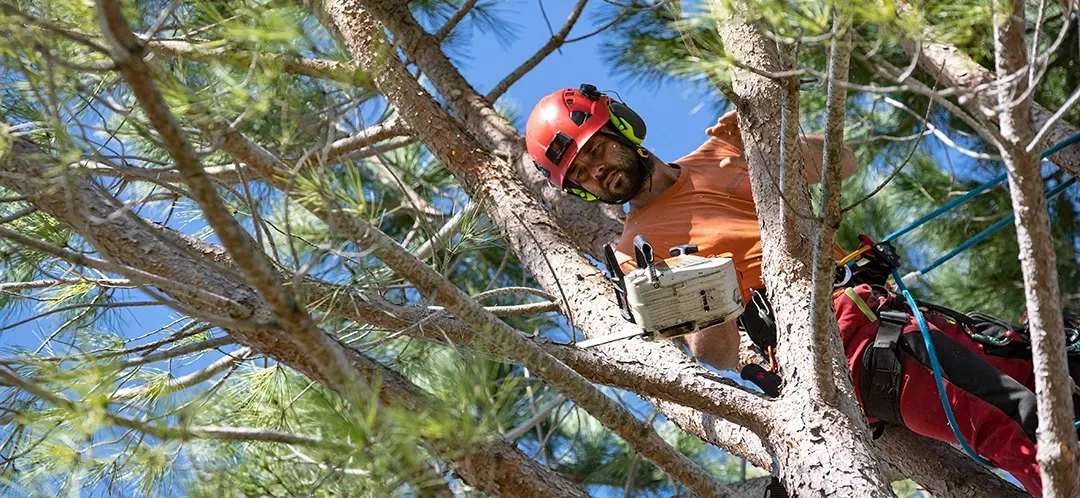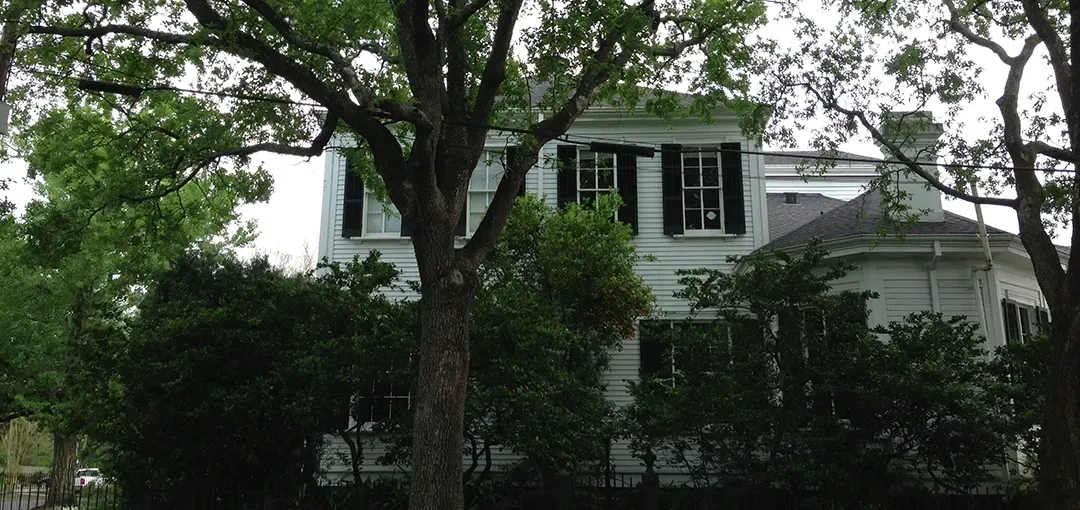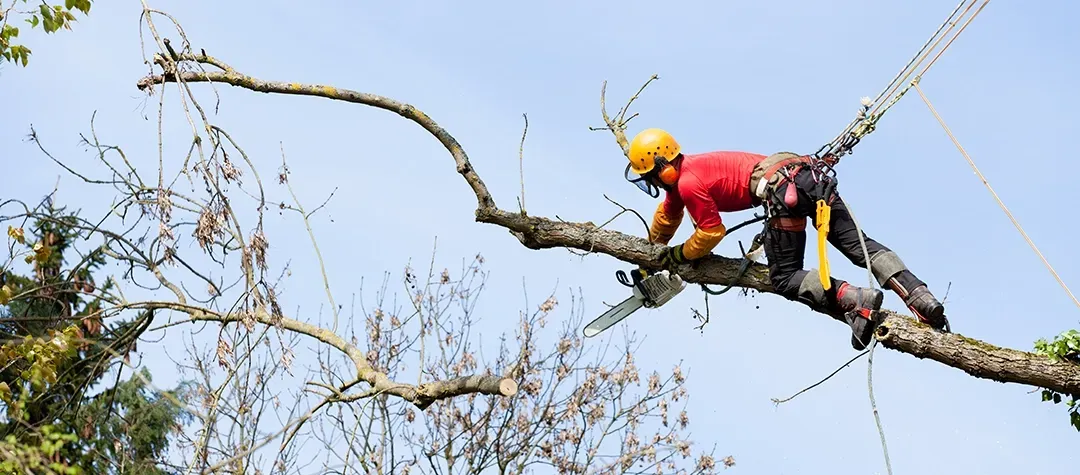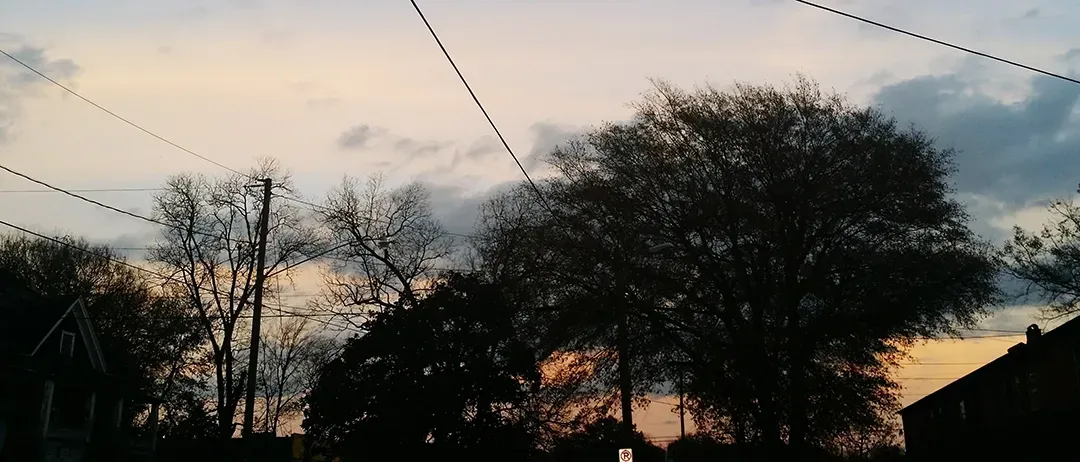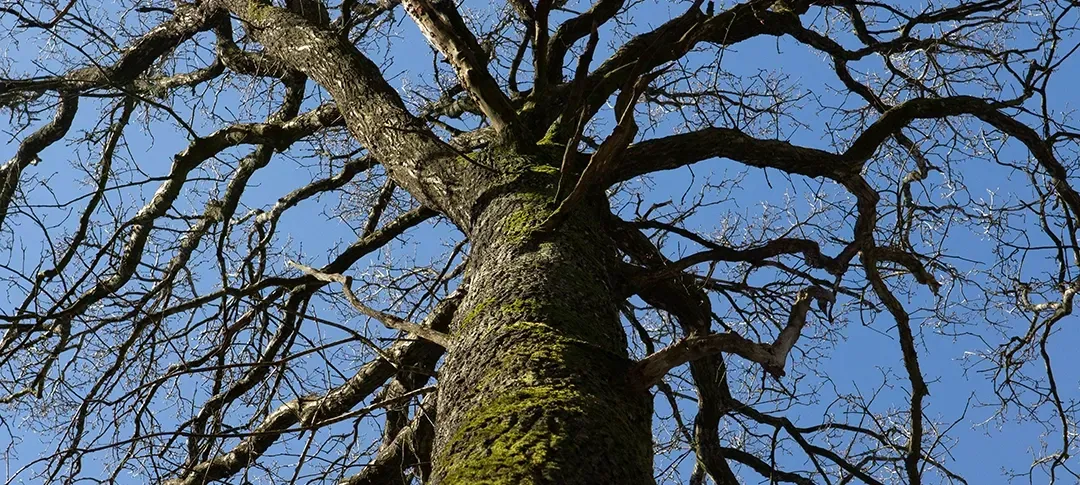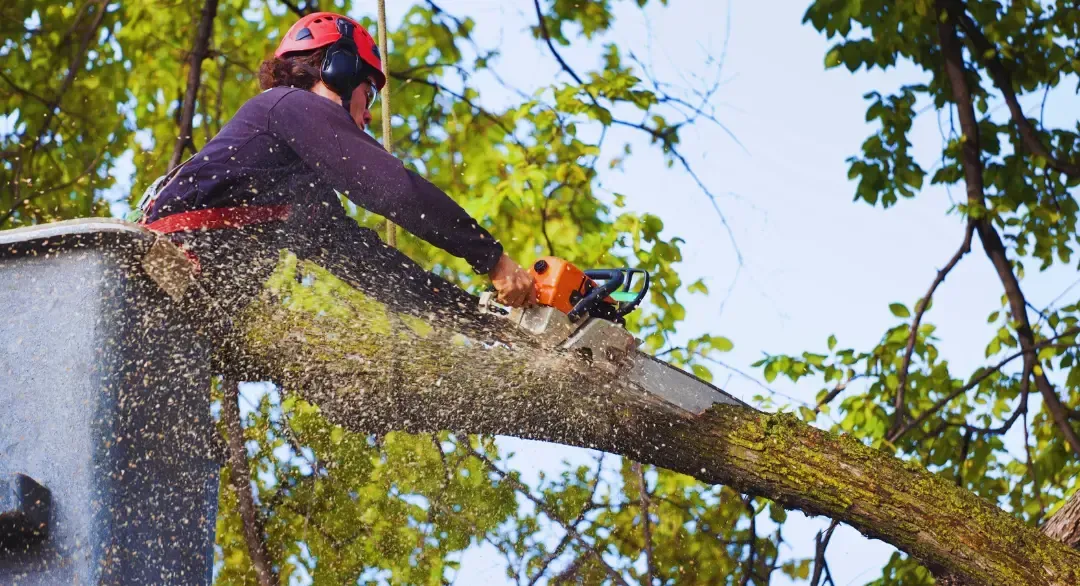What to Do When Your Neighbor's Tree is Leaning Over Your Property
Picture this: You're enjoying a peaceful Sunday afternoon in your Southern California backyard when you notice something unsettling. The grand oak tree in your neighbor's yard seems to be leaning more and more towards your property. You mention it to your neighbor, but they shrug it off, saying they're not worried. Now you're left wondering, "What should I do about this potential hazard?"
Don't worry, you're not alone in this predicament. Many homeowners face similar situations, and I'm here to guide you through the process of addressing this issue safely and effectively. In this comprehensive guide, we'll explore everything from understanding your rights to taking action, all while maintaining good neighborly relations.

Understanding Property Rights and Tree Ownership
Before we dive into solutions, it's crucial to understand where you stand legally. In Southern California, tree ownership laws can be a bit tricky, especially when it comes to trees near property lines.
Property Line Considerations
Generally, if the trunk of the tree is entirely on your neighbor's property, they own the tree. However, this doesn't mean you're powerless if its branches are encroaching on your space. You typically have the right to trim branches that extend over your property line, but it's always best to discuss this with your neighbor first.
Tree Ownership Laws in Southern California
Southern California has specific laws regarding tree ownership and maintenance. For example, in Los Angeles County, property owners are responsible for maintaining trees on their property, including those that may affect neighboring properties. It's worth checking your local municipal codes for more specific regulations.
Assessing the Risk: Is the Leaning Tree Really a Problem?
Before taking any action, it's essential to determine if the leaning tree poses a genuine risk. Not all leaning trees are hazardous, but certain signs can indicate potential danger.
Signs of a Hazardous Tree
- Visible decay or damage to the trunk
- Large dead branches
- Cracks or splits in the trunk or major branches
- Mushrooms growing from the base of the tree
- Soil heaving around the tree's base
Importance of Professional Assessment
While these signs can be helpful indicators, nothing beats a professional opinion. A certified arborist can provide a thorough hazardous tree assessment to determine the level of risk accurately. They can also recommend the best course of action, whether it's pruning, cabling, or in severe cases, removal.
Communicating with Your Neighbor
Now that you have a better understanding of the situation, it's time to have a conversation with your neighbor. Remember, approach this discussion with a friendly and cooperative attitude.
Tips for Approaching the Conversation
- Choose a good time when your neighbor isn't busy or stressed.
- Start with casual conversation before bringing up the tree issue.
- Express your concerns calmly and clearly.
- Suggest working together to find a solution.
- Be prepared to listen to their perspective as well.
Documenting Your Concerns
It's wise to keep a record of your conversations and observations about the tree. Take dated photos of the leaning tree and make notes of any changes you notice over time. This documentation can be valuable if the situation escalates or if you need to involve your insurance company later.
Legal Options and Responsibilities
If your neighbor remains uncooperative, it's important to understand your legal rights and responsibilities.
Your Rights as a Property Owner
In Southern California, you have the right to protect your property from damage caused by a neighbor's tree. This includes trimming overhanging branches, but be careful not to harm the tree's health or stability in the process.
Potential Liabilities for Tree Damage
If your neighbor's tree falls and damages your property, they may be held liable if they were aware of the hazard and failed to address it. This is why documenting your concerns is so important. However, if the tree falls due to an "act of God" like a severe storm, the liability may fall to you or your insurance company.
Taking Action: Tree Trimming and Maintenance
If you've decided that action needs to be taken, tree trimming is often the first step.
DIY vs. Professional Tree Trimming
While it might be tempting to tackle the job yourself, professional tree trimming and pruning services are often the safer and more effective option. Improper trimming can harm the tree and potentially create more hazards.
Selecting a Reputable Tree Service
When choosing a tree service in Southern California:
- Look for certified arborists
- Check for proper licensing and insurance
- Read reviews and ask for references
- Get multiple quotes before deciding
Remember, the cheapest option isn't always the best when it comes to tree care.
Tree Removal: When Is It Necessary?
In some cases, trimming may not be enough, and tree removal might be the only safe option.
Factors to Consider Before Removal
- The overall health of the tree
- The tree's structural integrity
- The potential for property damage
- The tree's proximity to structures or power lines
- The tree's environmental and aesthetic value
Permits and Regulations in Southern California
Many cities in Southern California require permits for tree removal, especially for certain protected species. For example, in Los Angeles, you need a permit to remove any tree with a trunk diameter of 4 inches or more. Always check local regulations before proceeding with tree removal.
Preventive Measures for Future Tree Issues
Once you've addressed the current issue, it's wise to take steps to prevent future problems.
Regular Tree Inspections
Schedule annual inspections with a certified arborist. They can spot potential issues before they become serious problems.
Proper Tree Care and Maintenance
Healthy trees are less likely to become hazards. Proper watering, fertilization, and pruning can go a long way in maintaining tree health. Consider creating a tree care plan with your neighbors for shared or boundary trees.
Insurance Considerations
Understanding how your insurance policy relates to tree damage is crucial.
Homeowners Insurance Coverage for Tree Damage
Most homeowners insurance policies cover damage caused by falling trees, regardless of whose property the tree was on. However, the coverage may not include the cost of removing the fallen tree unless it's blocking a driveway or ramp.
Documenting Potential Risks
Keep your insurance company informed about potential tree hazards. If you've documented your concerns and taken reasonable steps to address the issue, you'll be in a better position if you need to make a claim.
Community Resources and Mediation Services
If you're struggling to resolve the issue with your neighbor, there are resources available to help.
Local Arborist Associations
Organizations like the Western Chapter of the International Society of Arboriculture can provide expert advice and help you find certified professionals in Southern California.
Neighborhood Dispute Resolution Options
Many communities offer mediation services to help resolve neighbor disputes. These can be a great way to find a solution without resorting to legal action.
Environmental Impact of Tree Removal
Before deciding on tree removal, consider the environmental implications.
Ecological Benefits of Mature Trees
Mature trees provide numerous benefits:
- They absorb carbon dioxide and produce oxygen
- They provide habitat for wildlife
- They help reduce energy costs by providing shade
- They can increase property values
Alternatives to Complete Tree Removal
Consider options like crown reduction or cabling before opting for complete removal. These methods can often mitigate risks while preserving the tree.
Replanting and Landscaping After Tree Removal
If tree removal is necessary, think about how to replace the lost greenery.
Choosing the Right Replacement Trees
Select trees that are:
- Native to Southern California
- Appropriate for your soil type and available space
- Less likely to cause future issues (e.g., trees with strong root systems)
Landscape Design Considerations
Use this as an opportunity to improve your landscape design. Consider factors like:
- Privacy
- Shade
- Aesthetics
- Water conservation (important in Southern California)
Long-term Neighborhood Relations
Remember, your goal is not just to solve the current problem, but to maintain good relations with your neighbors.
Maintaining Positive Relationships After Disputes
After resolving the tree issue:
- Thank your neighbor for their cooperation
- Consider a small gesture of goodwill, like sharing produce from your garden
- Stay open to future discussions about property maintenance
Creating a Shared Tree Care Plan
Propose a shared plan for maintaining trees near your property line. This proactive approach can prevent future disputes and ensure the health of your shared landscape.
Conclusion
Dealing with a neighbor's leaning tree can be challenging, but with the right approach, it's a problem that can be solved amicably and safely. Remember to prioritize open communication, seek professional advice when needed, and always consider the legal and environmental aspects of tree care.
By taking these steps, you're not just protecting your property; you're also contributing to the health and beauty of your Southern California neighborhood. And who knows? This tricky situation might even lead to a stronger relationship with your neighbor.
If you need expert help with tree removal services or advice on tree care, don't hesitate to reach out to local professionals. Your safety and peace of mind are worth the investment.
Key Takeaways
- Understand your rights and responsibilities regarding neighboring trees.
- Communicate openly and calmly with your neighbor about your concerns.
- Get a professional assessment to determine the level of risk.
- Consider all options, from trimming to removal, based on expert advice.
- Document all interactions and observations related to the tree issue.
- Be aware of local regulations and obtain necessary permits for tree work.
- Consider the environmental impact before deciding on tree removal.
- Maintain good relations with your neighbor throughout the process.
FAQs
- Q: Can I trim my neighbor's tree branches that hang over my property? A: Generally, yes. In Southern California, you have the right to trim branches that extend over your property line, but it's best to discuss this with your neighbor first and ensure you don't harm the tree's health.
- Q: Who is responsible if my neighbor's tree falls and damages my property? A: If your neighbor knew the tree was hazardous and did nothing, they could be liable. If it falls due to a storm or other "act of God," it typically falls under your homeowner's insurance.
- Q: Do I need a permit to remove a tree in Southern California? A: It depends on your specific location and the size of the tree. Many cities require permits for removing trees above a certain size. Always check local regulations before removing a tree.
- Q: How often should I have my trees inspected? A: It's recommended to have a professional arborist inspect your trees annually, especially if you have large or old trees on your property.
- Q: What should I do if my neighbor refuses to address a hazardous tree? A: Document your concerns, consider getting a professional assessment, and if necessary, contact your local municipal authorities or consider legal advice.
Remember, when in doubt, it's always best to consult with professional tree care experts who are familiar with the specific challenges and regulations of Southern California. They can provide tailored advice for your unique situation and help ensure the safety of your property while maintaining the beauty of your local environment.
